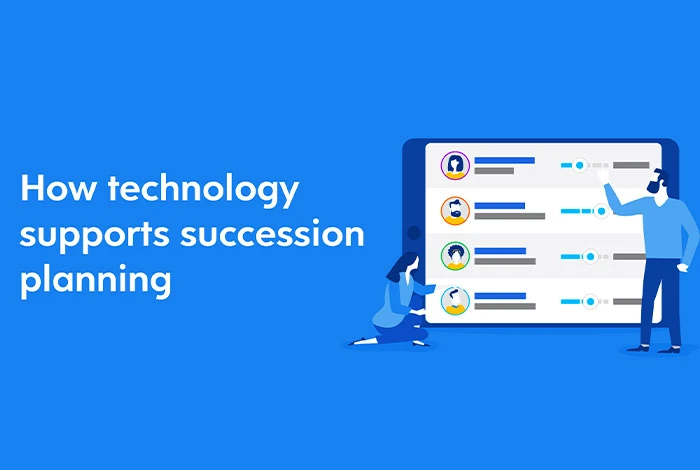Your leaders are the undeniable pillars of strength for your organization.
But will they stay forever? Well, nothing stays forever, and you have to be ready for these uncertainties.
Succession planning in HRM is one way that can ensure that your organization keeps functioning profitably, with or without the current set of people. It enables organizations to identify upcoming key leaders for the future, when current mentors move out of their roles.
Further, let’s understand what succession planning is, how it works, what process you need to follow.
What Is Succession Planning in HRM?
Success planning refers to a process where the leadership roles are passed on to mid-level employees. This ensures that your management responsibilities do not lie unattended when existing leaders move on to new opportunities or retire. Succession planning in HRM is about making your subordinates ready to take up the leadership role.
Succession planning ensures that your employees are trained well to get promoted and take up new challenges and roles. However, this process requires consistency and involves continuous evaluation of one’s leadership skills. At the same time, you need an extensive training program to nurture mid-level employees who have the potential to take leading roles.
Why Is Succession Planning Important in HRM

Succession planning is highly crucial for an organization to ensure its smooth functioning. Further, it focuses on retaining organizational talent, reducing hiring costs, finding new leaders for your organization, and more.
Suggested Read: How HR Can Boost Employee Engagement and Motivation
Let’s understand these benefits of succession planning in HRM in detail.
- Retain Talents for Long
Succession planning can help organizations in retaining employees as they will be able to see their career growth in the organization. Today, when startups are getting popular for sudden layoffs, an organization that believes in internal promotions and growth will become the first choice for employees. Similarly, it will attract more talent in the organization during hiring, while increasing job satisfaction for existing employees.
- Reduce Hiring & Recruitment Costs
Impulsive hiring decisions cost organizations in terms of money, time, and value. Especially when it is done at the top level, the stakes are higher. But if top roles are unfilled for a long time, it can disturb the workflow of your organization. So, hiring internal successors can save you from impulsive external hiring and the costs incurred from it.
- Identify Leaders in Your Organization
Succession planning in HRM helps you to recognize the right candidates that can become successors and take up leadership roles. You can analyze your employees’ willingness, skills, knowledge, and other factors to identify the candidates that might be fit to become successors now.
- Create a Culture of Legacy
When top managers exit the organization, they take their vision, mentorship, and strategies with them, which might become a loss for the organization. However, when a mentor trains the successor, all this gets carried forward and passed to the next generation. This way, even they can leave their imprints and legacy behind in the organization forever.
- Create Guidelines for Employee Training
A successful succession plan can assist organizations in creating the right training modules and pathway for employees. Mentors can draft training sessions for specific skills that they think the successors of the organization need. It will empower employees and prepare them for future challenges.
- Gain Trust of Stakeholders
An active succession plan ensures that an organization is both process-driven and people centric. It can focus on the betterment of their processes and the growth of their employees simultaneously. This helps the organization to stay stronger in front of its investors, especially in the case when it’s a publicly traded company, as it helps in measuring a company’s longevity.
Suggested Read: Recent Trends in HRM That You Must Consider
How Can Technology Help Success Planning in HRM

In an organization of 50 people, it might be easy to keep track of employees’ performance and identify future key leaders. But as the company grows and the headcount increases, it is impossible to track everyone at your fingertips.
But technology can help you do this with multiple employees across locations. Let’s find out how you can use technology for successful succession planning.
- Monitor Employees’ Growth
To identify your potential key leaders, you need to analyze your employee’s performance, and for that you need to evaluate them as per certain metrics. Any good HR software can show you all eligible employees in one place, their performance, badges, and other key achievements. From this data, you can select the best performing employees and consider them for career succession.
- Ensure Diversity in Your Succession Plan
Along with having the best performing employees in leadership roles, an organization also has to ensure that these roles consist of a diverse set of employees. So, when you select candidates that are eligible to become your successors, a succession platform can help in following a diverse approach. You can filter candidates based on their gender, ethnicity, region, and other metrics, and ensure that your organization is diverse and gives everyone an equal chance to lead.
- Prepare a Succession Plan in Advance
Exit of your mentors can be sad and sudden maybe because of an accident, illness, or an emergency medical condition. At this moment you, when the organization already is dealing with emotional loss, you don’t your organization to suffer from operational loss as well.
So, being prepared in advance with a succession plan can be helpful. Using technology and employee performance statistics you can make more measured decisions and minimize any negative impact or loss.
- Reduce Complexities in Succession Planning
Selecting the right successors is a decision based on many other factors other than performance such as upskills, behavior, retention, etc.
This adds up to the complexities involved in succession planning. However, succession planning software allows mentors to add reviews for their potential successors, which can be concluded to make the final decision. This ensures that you choose a future leader that is an overall fit for the organization.
What is the Process of Creating a Successful Succession Plan in HRM
The process of succession planning starts by identifying key senior positions that may rise with time in the organization and then recognizing the potential employees that can be a good fit for these positions. After this, start finalizing and preparing the candidate to take up the leader’s role.
Identify any skills gaps, then try to bridge them with employee training and development programs, and then finally implement the succession plan. Also, we recommend you assess your succession plan at regular intervals and make any modifications if required.
- Identifying Future Managerial Positions
To start with the process of succession planning, firstly you need to identify the positions that are likely to be empty in the near future or new positions that may arise with time. You can identify these by analyzing the organizational chart to understand if there is any requirement because of any process change, geographical expansion, or modification in your current business model.
In addition to this, you can also review your current managers or mentors and try to understand their outlook on the organization. You need to understand if their personal and professional goals align with that of the organization or not.
- Recognize Your Potential Employees
Now, when you have a list of potential vacant roles, you need to find potential candidates to fill in the roles. But this may be subjective to different mentors. However, you must consider the following points while selecting a successor:
- Achievements in the current role
- Empathy towards other colleagues
- Interest and willingness to take up leadership roles
- Team leader and a team player
- Alignment with the organization’s culture
Suggested Read: Functions of HRM (Operative and Managerial) | Steps of Human Resource Planning
- Identify Skill Gaps
Now, when you have filtered a few employees who are eligible to become future mentors, you need to identify what skills do they lack currently. You can test these skills by giving an assignment containing strategic questions and scenarios, or a real-life challenge. The test results will tell which skills are missing in a candidate and what are the scopes for improvement.
- Upskill Employees with Trainings & Workshops
As an organization and mentor, it is your responsibility to bridge the skills gap your employees have. You can do this by offering employee training and workshops that are aligned with your organizational goals. After the training is completed, there should be a formal follow-up and assessment to check if the skill gap has been covered or not. This will also help you identify what more future training and workshops are required.
- Implement the Succession Plan
Finally, when your candidates are ready to take up new roles, it’s time to implement the succession plan. You can start by doing a trial run of the plan while the mentors are still associated with your organization. This will make successors feel more confident, and also, they will have a go-to person, whenever they get stuck or need advice.
- Assess the Effectiveness of Your Succession Plan
To know how your new leaders are performing, if their subordinates are happy under their leadership, or not, you need to assess the effectiveness of the succession plan. You can do this by comparing the performance in a quarter under their leadership in terms of numbers. In fact, you can also arrange meetings with their subordinates to get their feedback and review towards new leadership styles.
What to Consider When Opting for Succession Plan in HRM
There are certain factors that you should consider while creating a succession plan in your organization.
- Don’t push family successors to take up leadership roles
- Consider multiple candidates to find the right fit
- Ensure that you talk about employee retention and future of the candidate while offering a leadership role
- Resources for adequate employee training and development
- Maintain complete transparency while communicating with your successors
- Create a formal and standardized selection process to identify successors
- Review and modify your succession plan at regular intervals
Related Categories: Payroll Management Software | Leave Management Software | Grievance Management Software
FAQ’s
Why does succession planning matter?
Succession planning ensures that an organization does not suffer due to the unexpected exit of a senior level employee. It keeps the organization ready with successors that can fill up leadership roles.
What are the five levels of succession planning?
The five levels of succession include ownership succession, management succession, cultural succession, relationship succession, and leadership succession.
Is succession planning part of HRM?
Yes, succession planning is a part of HRM as it gives an idea to HR for upcoming vacant roles, helps them plan training programs, assess employees, and plan their succession cycle.
How does succession planning work?
In succession planning, an organization identifies the potential vacant leadership roles that may arise in the future, and potential candidates from the organization who might fit in those roles. This includes complete assessment of the potential employees, bridging the skills gap, and making them ready for leadership positions.
What is the purpose of succession planning?
The main purpose of succession planning is to ensure that an organization becomes process-centric and people-centric. It means that the company should not be affected if anyone in the leadership role exists, there should always be an equally capable candidate or successor to take up the role.
How to define succession planning in HRM?
Succession planning can be defined as the process of identifying possible leadership roles that may go vacant in the future and potential successors that may fill up the role.
Isha’s writing journey started way back in 2018 when she graduated in the field of Journalism & Mass Communication. Since then, she has been writing for all digital and print marketing assets including blogs, editorial reviews, landing pages, emailers, and more. She has contributed her writings to genres... Read more





























